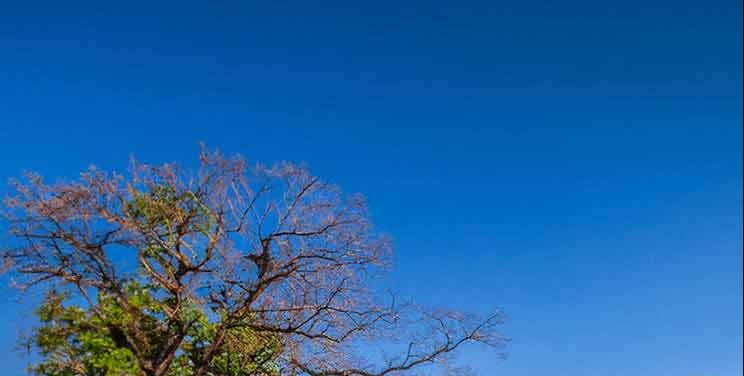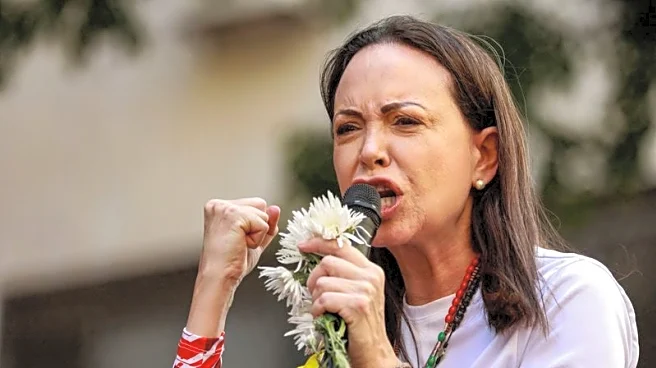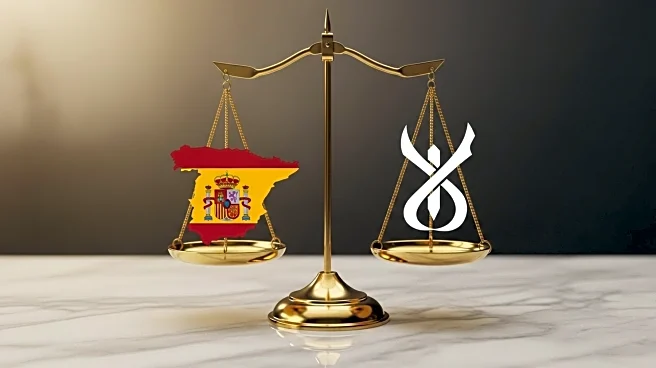What is the story about?
What's Happening?
On October 12, two activists from the climate group Futuro Vegetal were arrested after defacing a painting of Christopher Columbus at the Naval Museum in Madrid. The activists threw biodegradable red paint on the artwork, which is titled 'First Tribute to Christopher Columbus' by José Garnelo, and displayed a banner stating 'October 12, nothing to celebrate. Ecosocial justice.' The protest aimed to draw attention to the ongoing exploitation of Indigenous lands and resources, which the group describes as 'extractive neocolonialism.' The activists were charged with crimes against cultural heritage and taken for questioning. October 12 marks Spain's National Day, celebrating Columbus's arrival in the Americas in 1492, a day that is contentious due to its association with the colonization and oppression of Indigenous peoples.
Why It's Important?
The protest by Futuro Vegetal underscores the growing global discourse on the historical impact of colonization and its modern-day implications. By targeting a symbol of colonial history, the activists aim to challenge the narrative that celebrates Columbus's legacy without acknowledging the suffering and exploitation of Indigenous populations. This action reflects broader movements advocating for ecosocial justice and the reevaluation of historical figures and events. The incident may influence public opinion and policy discussions regarding cultural heritage, historical accountability, and environmental justice, potentially leading to increased support for Indigenous rights and sustainable practices.
What's Next?
The arrest of the activists may lead to legal proceedings that could further spotlight the issues they are advocating for. Additionally, the protest could inspire similar actions or discussions in other countries that observe Columbus Day or its equivalents. Institutions may face pressure to reconsider how they commemorate historical figures associated with colonialism. The broader movement for ecosocial justice may gain momentum, prompting governments and organizations to address the concerns raised by activists regarding the exploitation of Indigenous lands and resources.
Beyond the Headlines
The protest raises ethical questions about the preservation of cultural heritage versus the need to address historical injustices. It challenges museums and cultural institutions to balance the protection of artworks with the responsibility to engage in meaningful dialogue about their historical context. The incident also highlights the role of activism in shaping public discourse and policy, as well as the potential for art to serve as a powerful medium for social change.
AI Generated Content
Do you find this article useful?
















